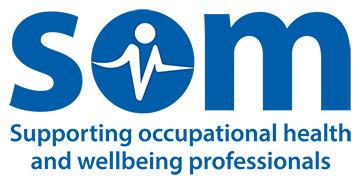Guest blog by Richmond Stace, Specialist Pain Physiotherapist & Multidisciplinary Pain Coach
This blog explores how we can better support people living with chronic pain - whether they are at work or preparing to return. It is a follow-up to Understand Pain: A New Perspective for Occupational Health.
There are many reasons someone may experience chronic pain. It might follow injury or stem from a long-term condition such as inflammatory disease, diabetes, migraine, IBS, fibromyalgia, chronic fatigue, or endometriosis. Pain may also develop gradually, for example, in the back, neck, or limbs. Other contributors include stress, burnout, perimenopause, menopause, post-viral pain, and recurring infections.
Pain is the most common reason people seek help. To support people effectively, they need to understand their pain - what it is, what contributes to it, what help is available, and what they can do for themselves. At the heart of our approach is a caring collaboration. While medical treatments - such as medication for neuropathic pain - can ease symptoms, lasting change comes from how a person lives each day.
Transforming chronic pain is a learning process, like learning an instrument. It takes practice, support, and an environment of trust. We begin by clarifying the person’s picture of success. For example:
- To work productively while caring for myself
- To return to work as part of my personal growth
Next, we explore the person’s needs - the foundations for healing and thriving. These may include:
- Movement and exercise
- Relevant medical or condition-specific support
- Safety and stability
- Nourishing food, restorative sleep
- Positive relationships, respect, and connection
- Letting go of limiting beliefs and outdated narratives
- Acceptance and self-compassion
We then ask: What truly matters to you? From this, we co-create a values-based strategy that includes practices, exercises, and skills to support their journey. This is the essence of the Pain Coaching approach: practical, person-centred, compassionate, and focused on strengths and possibility.
"We cannot change, we cannot move away from what we are, until we thoroughly accept what we are. Then change seems to come about almost unnoticed."
- Carl Rogers
Supporting people in the workplace - At least 20% of adults live with chronic pain, meaning many are doing their best at work while managing pain. How can we help?
First, understand the person and their situation. Involve them in the process - they are the expert in their own experience.
Effective support requires cooperation and goodwill between employee and employer, built on clear and respectful communication. Each party should understand the goals, actions, and how progress will be supported and reviewed.
Depending on the workplace and role, support could include:
- Workspace adjustments
- Flexible or reduced hours
- Hybrid or remote work options
- Regular wellbeing check-ins
- Opportunities for movement breaks
- Access to relevant support or services
Helpful, forward-focused questions include:
- How can we work together to create the best outcome for all?
- How can we support this person to do their best work?
- How can we promote wellbeing across the organisation?
These conversations benefit not only the individual but also the wider team, creating a healthier and more compassionate workplace.
The same principles apply when someone is returning to work. A shared plan based on understanding and trust allows everyone to move forward with clarity. Returning to work is a valuable step - it restores purpose, routine, movement, and meaningful connection.
The old model of treating pain by targeting the site of discomfort and intervening directly often falls short. What works better is a whole-person approach: meeting the person’s needs, aligning with their values and goals, and supporting meaningful engagement with life: ‘living yourself better.’
Living yourself better - Living yourself better means making daily choices that align with your values and move you toward your version of success.
Work - and returning to work - can be a powerful part of this journey. When approached positively, it supports purpose, connection, movement, and growth.
Together, we create a routine that the person can commit to, built around personalised skills and habits (there are many to draw upon), for example:
- A morning routine to set the tone
- Meditation and breathing practices
- Movement and strength exercises
- A consistent self-care habit
- “Motion is lotion” - regular, nourishing movement
- Time and activity chunking with recovery breaks
- Awareness and regulation of thoughts
- Gratitude and self-compassion practices
These are not just tools to manage pain - they are part of a life that supports healing, hope, and momentum.
Your role as an occupational health professional is to guide, support, and, when necessary, provide or coordinate treatment. But more than anything, it is to help the person reconnect with possibility and take daily steps toward their vision of wellbeing - with acceptance and kindness.
Reflection Points
- What is pain, and what is its purpose?
- How can I help the person understand their pain?
- How do I build a caring collaboration?
- What is my role in guiding someone to transform pain?
- How can I stay self-aware in this process?

Richmond Stace is a Specialist Pain Physiotherapist and Multidisciplinary Pain Coach.

